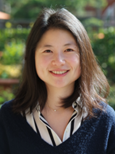Colloquia & Guest Speakers
Illuminate Disease By Programming Nonlinear Effects of Multimode Fibers
Sixian You, Associate Professor, MIT EECS
Monday, October 7, 2024
3:30 p.m.
Presented in-person in Goergen 101 and on Zoom
Abstract
Biomedical discoveries have been largely driven by advances in imaging, esp. microscopy, due to its unique capacity of capturing cell in action in the tissues. While most discoveries have been made by microscopy in dead, sliced, and labeled tissues, capturing biological processes alive and label-free is highly desirable as it adds the spatiotemporal dimension of information and mitigates the confirmation bias of existing labels. However, live-tissue label-free pathology is challenging because 1) intrinsic contrast is weak and few, 2) light diffracts and scatters, which limits imaging to shallow imaging depth, limited tissue contrast, and low throughput. In this talk, we will dive into a few mechanisms we can drastically increase the depth, contrast, and throughput of live-tissue pathology for biomedical applications, with a focus on imaging-guided personalized medicine. We will also discuss their implications on potential breakthroughs in understanding and treatment of prevalent, but complex and poorly understood human diseases.
Biography

Sixian You is Assistant Professor in the MIT EECS department, and a Principal Investigator in the Research Laboratory of Electronics. Sixian did her B.S. at Huazhong U on optics, Ph.D. at UIUC working on microscopy, and completed her postdoc at UC Berkeley on computational microscopy. Her research interests are in biophotonics and microscopy, with an emphasis on developing hardware and algorithms to overcome longstanding imaging limitations for biomedical translation. She has been the recipient of NSF CAREER Award, SCIALOG (Advancing Bioimaging) Award, Amazon Research Award, Microscopy Innovation Award, McGinnis Medical Innovation Graduate Inaugural Fellowship, Computational Science and Engineering Fellowship (UIUC), and Nikon Photomicrography Competition Image of Distinction award. Her work has been featured on the Cancer Research Cover, PNAS Cover, and Nature Communications Editors’ Highlight.
